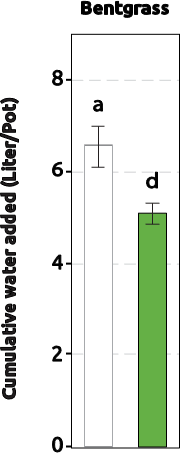Vulpes has developed a novel manufacturing process and scientific understanding for a new class of crop resource transporters to better utilize water and nutrients and to unlock resources already available in the soil.
Vulpes has created a way to modify the surface of carbon nanomaterials to create an enormous number of pores and channels and to ensure the right combination of a negatively charged and weakly acidic surface. Such surface modification allows carbon nanomaterials to attract water and nutrients from the soil onto it surface. As crops take in the carbon nanomaterials inside and break them down as carbon sources, our carbon nanomaterials release the water and nutrients as well.
Vulpes has been collaborating with 13 teams across 9 U.S. research institutions to examine and replicate the effect of our modified carbon nanomaterial in stimulating resource uptake. Due to contractual restrictions, we cannot publicly announce either the collaboration or the data ourselves. But one public presentation from our collaborators at the University of California, Riverside has already demonstrated that, with merely one foliar application, our modified carbon nanomaterial can reduce the water usage of Bentgrass by up to 35% over 90 days. And the grass would demonstrate much better drought resistance after water withdrawal.

Our other research collaborators are able to observe and replicate nutrient and water uptake results across a wide range of crops at least at the same level — 20%-30% NPK and water uptake improvement seems to be the baseline across crops and growing conditions while some outliers reach more than ten-fold the baseline.
